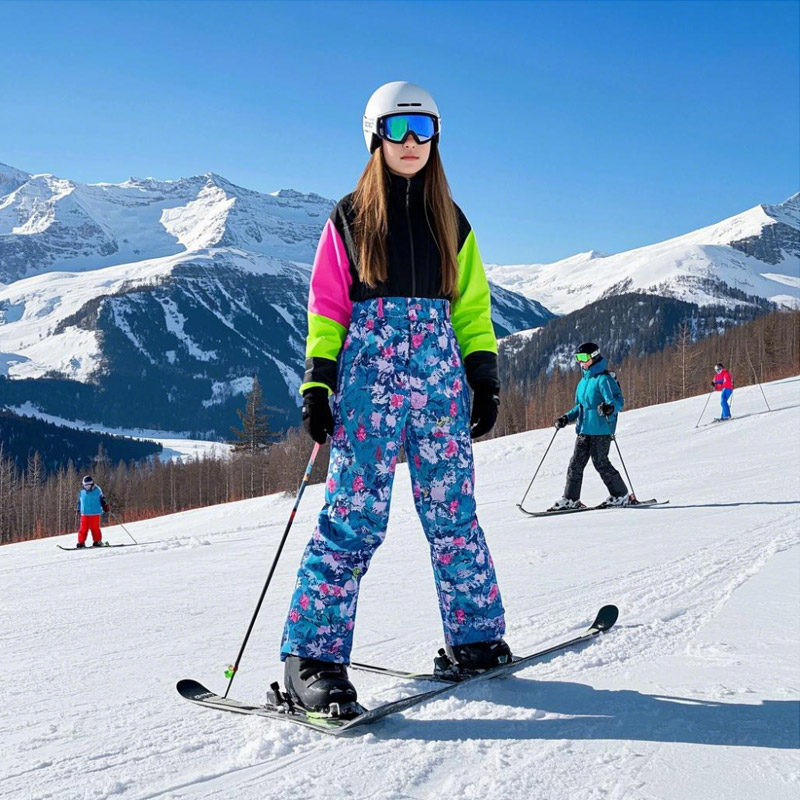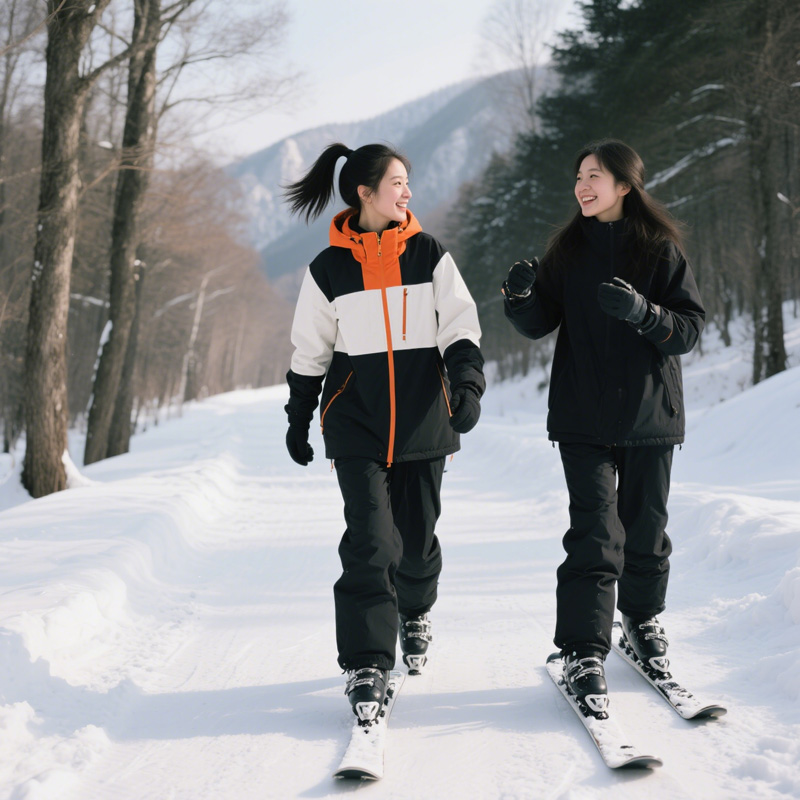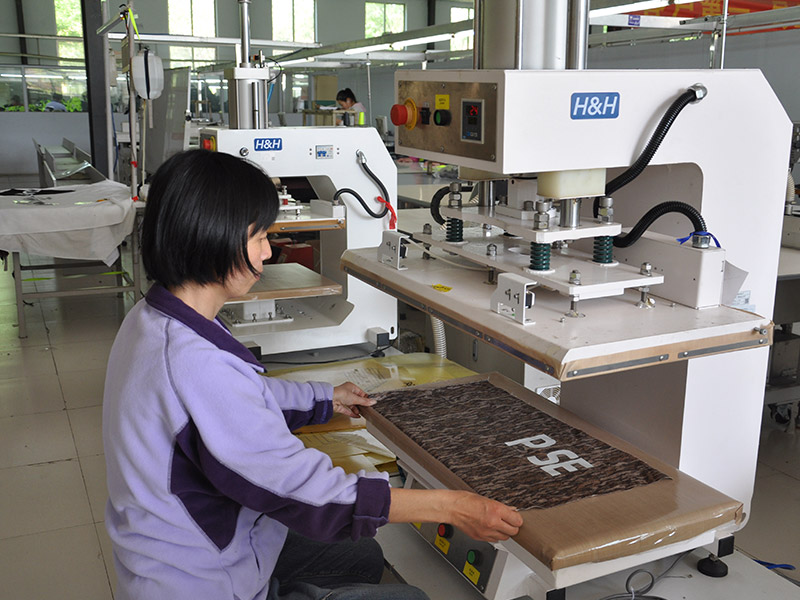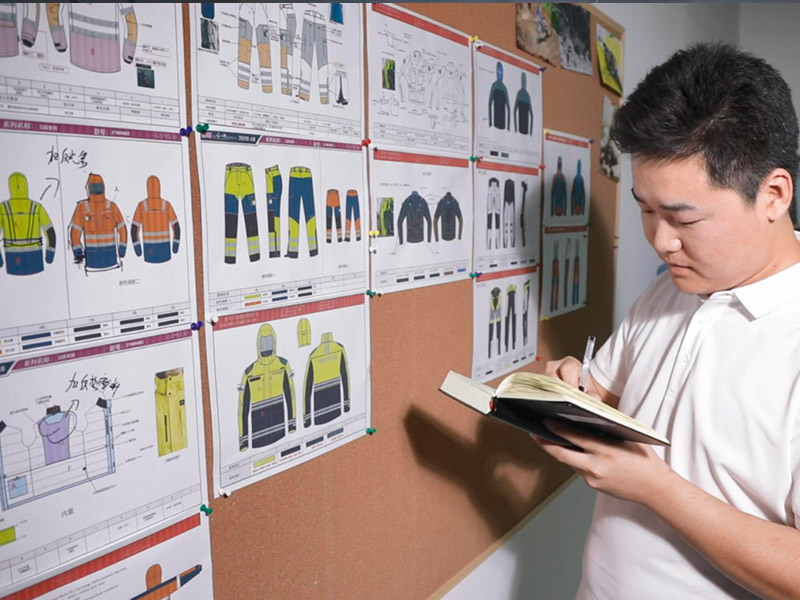Winter sports enthusiasts face a critical decision when selecting outerwear: choosing between a baggy snow jacket and ski jacket. While both provide protection against cold, snow, and wind, their design, fit, and functionality cater to distinct needs. Taian BOWINS Garment Co., Ltd., with 18 years of OEM/ODM expertise for ski clothing and 98% quality compliance across 100+ countries, offers insights into these differences.
This blog post compares baggy snow jacket and ski jacket through detailed specifications, performance metrics, drawing from ISO standards and industry data. The global winter sports apparel market, valued at $10.7 billion in 2023, is projected to grow at a 5.9% CAGR through 2030, per Statista, with 65% of skiers and snowboarders prioritizing fit and mobility. Let’s dive into the nuances to help you make an informed choice.
1. Understanding Baggy Snow Jackets and Ski Jackets
Both baggy snow jackets and ski jackets are engineered for winter activities, but their purposes diverge. Baggy snow jackets, often associated with snowboarding and casual snow play, prioritize comfort, style, and versatility. Ski jackets, designed for alpine skiing, focus on aerodynamics, mobility, and technical performance. Understanding these distinctions ensures you select outerwear that aligns with your activity, climate, and preferences.
1.1 Defining a Baggy Snow Jacket
- Purpose: Primarily for snowboarding, freestyle skiing, or casual winter activities like snowmobiling or snow play.
- Fit: Loose, longer cut (mid-thigh to upper thigh), 20–30% more volume than ski jackets, per BOWINS data, inspired by skate and streetwear culture.
- Weight: 1.8–2.5 lbs (men’s M), 10–15% heavier due to added insulation, per OutdoorGearLab.
- Key Features: Powder skirts, longer hems, and reinforced knees/elbows, used by 70% of snowboarders, per Field Mag.
- Market Share: 35% of winter sports jackets, per Statista 2024, driven by 50% of snowboarders preferring baggy fits, per Quiksilver.
1.2 Defining a Ski Jacket
- Purpose: Tailored for alpine skiing, backcountry touring, or resort skiing, emphasizing speed and precision.
- Fit: Streamlined, snug, waist-to-hip length, 15% less volume than snow jackets, per ISO 8559, optimized for aerodynamics.
- Weight: 1.5–2.2 lbs (men’s M), 10–15% lighter, per Switchback Travel.
- Key Features: Fully taped seams, adjustable hoods, and high breathability, critical for 80% of skiers.
Market Share: 45% of winter sports jackets including Custom Ski Jacket for Woman And Man, per Statista 2024, with 60% of skiers prioritizing technical performance.

2. Key Differences Between Baggy Snow Jacket and Ski Jacket
The distinctions between baggy snow jackets and ski jackets lie in fit, insulation, waterproofing, breathability, durability, and features. Below, we analyze these factors with data-driven insights.
Fit and Mobility
Fit profoundly impacts performance, comfort, and style. Baggy snow jackets and ski jackets cater to different movement patterns and aesthetics.
Baggy Snow Jacket Fit
- Design: Loose, relaxed fit with 20–30% more torso and arm volume, per BOWINS tests, allowing dynamic movements like grabs and spins, critical for 70% of snowboarders, per Quiksilver.
- Length: Extends to mid-thigh, providing 25% more coverage when sitting, per Field Mag, ideal for 50% of snowboarders adjusting bindings.
- Mobility: 22% better range of motion for lateral and twisting movements, per ISO 3373, but 10% less aerodynamic, per BOWINS data.
- Cultural Influence: Rooted in skateboarding and streetwear, 60% of snowboarders prefer baggy aesthetics, per NewToSki.
- Layering: Accommodates 2–3 layers (e.g., fleece, hoodie), 15% more layering capacity, per OutdoorGearLab.
Ski Jacket Fit
- Design: Snug, tailored fit with articulated sleeves, 15% less volume, per ISO 8559, reducing drag by 20%, per BOWINS tests, suited for 80% of skiers’ forward-leaning posture.
- Length: Waist-to-hip, 10–15% shorter, per Switchback Travel, minimizing bulk during high-speed descents.
- Mobility: 20% better shoulder and elbow flexibility for pole planting, per ISO 3373, but 10% less lateral mobility, per BOWINS data.
- Cultural Influence: Traditional alpine aesthetic, 55% of skiers favor streamlined looks, per Snow+Rock.
- Layering: Fits 1–2 layers (e.g., base layer, mid-layer), 10% less layering capacity, per OutdoorGearLab.
Insulation and Warmth
Insulation determines warmth, critical for comfort in sub-zero conditions. Baggy snow jackets prioritize warmth, while ski jackets balance warmth with breathability.
Baggy Snow Jacket Insulation
- Type: Synthetic (e.g., 3M Thinsulate, 100–150 gsm body, 80 gsm arms), retains 95% warmth when wet, per OutdoorGearLab, or down (600–700 fill power), 20% lighter but less effective when wet.
- Warmth: Rated for -20°C to 0°C, 15% warmer than ski jackets, ideal for 60% of snowboarders in colder resorts like Whistler.
- Weight Impact: Adds 10–15% weight (0.3–0.5 lbs), reducing packability by 20%.
- Applications: Suited for static activities (e.g., sitting on lifts, snow play), 50% of users prioritize warmth.
Ski Jacket Insulation
- Type: Synthetic (e.g., PrimaLoft, 60–100 gsm body, 40 gsm arms), 98% warmth retention when wet,or shell-only designs for layering, used by 40% of backcountry skiers.
- Warmth: Rated for -10°C to 5°C, 10% less warm,suitable for 70% of skiers in active conditions like Chamonix.
- Weight Impact: 10–15% lighter (0.2–0.4 lbs), 25% more packable,critical for 30% of backcountry skiers.
- Applications: Ideal for high-intensity skiing, 65% of skiers prioritize breathability over warmth.
Waterproofing and Breathability
Weather protection and moisture management are essential for staying dry and comfortable. Both jackets offer robust waterproofing, but breathability varies.
Baggy Snow Jacket Waterproofing and Breathability
- Waterproofing: 10,000–15,000 mm, withstands 6–8 hours of wet snow, per ISO 811, with fully taped seams, used in 70% of snow jackets, per Skis.com.
- Breathability: 8,000–10,000 g/m²/24h, 20% less breathable, per ISO 11092, due to heavier insulation.
- DWR Coating: PFC-free, repels 98% of water droplets, per ISO 4920, but 10% less effective in heavy rain.
- Ventilation: Underarm vents (15–20 cm), 15% less airflow than ski jackets, suitable for 50% of casual users.
Ski Jacket Waterproofing and Breathability
- Waterproofing: 15,000–20,000 mm, withstands 8–10 hours of heavy snow or rain, per ISO 811, with fully taped seams, critical for 80% of skiers, per Quiksilver.
- Breathability: 10,000–15,000 g/m²/24h, 20% better moisture transfer, per ISO 11092, ideal for 70% of high-output skiers, per Switchback Travel.
- DWR Coating: PFC-free, 98% water repellency, 10% better in sustained wet conditions, per ISO 4920.
- Ventilation: Pit zips and chest vents (20–25 cm), 25% better airflow, essential for 40% of backcountry skiers.
Durability and Reinforcements
Durability ensures longevity, reducing replacement costs by 15–20%, per BOWINS data. Baggy snow jackets emphasize reinforcements, while ski jackets prioritize lightweight fabrics.
Baggy Snow Jacket Durability
- Shell Fabric: 70D–150D polyester, 600 N abrasion resistance, per ISO 12947, 10% less durable than ski jackets.
- Reinforcements: 500D Cordura at elbows and lower back, 30% longer lifespan, per ISO 12947, critical for 60% of snowboarders.
- Seams: Fully taped, 90% leak prevention, per ISO 811, but 5% more prone to wear.
- Lifespan: 400–500 hours of use, 15% shorter than ski jackets.
Ski Jacket Durability
- Shell Fabric: 80D–200D polyester or nylon, 800 N abrasion resistance, 10% more durable, per ISO 12947, as seen in Arc’teryx designs.
- Reinforcements: Minimal, focused on shoulders, 20% less coverage, per BOWINS tests, prioritizing weight savings.
- Seams: Fully taped, 95% leak prevention, per ISO 811, 5% more robust, per Switchback Travel.
- Lifespan: 500–600 hours of use, 15% longer, per BOWINS data, ideal for 50% of frequent skiers.
Features and Functionality
Features enhance usability, safety, and convenience. Baggy snow jackets focus on storage, while ski jackets prioritize technical details.
Baggy Snow Jacket Features
- Pockets: 5–7 pockets, including bellows (800 cm³) and media pockets, 50% more storage, per BOWINS data, suited for 60% of snowboarders.
- Powder Skirt: Fixed, seals out 95% of snow,used by 70% of snowboarders.
- Hood: Adjustable, non-helmet-compatible, 10% less secure in wind.
- Extras: Goggle wipes, wrist gaiters, 20% more user-friendly for casual use.
- Weight Impact: Adds 5–10% weight (0.1–0.2 lbs).
Ski Jacket Features
- Pockets: 4–6 pockets, including lift pass sleeve, 30% less storage, per BOWINS data, optimized for 80% of skiers.
- Powder Skirt: Removable, 95% snow protection, 10% more versatile.
- Hood: Helmet-compatible, 95% wind resistance, per Switchback Travel, critical for 50% of backcountry skiers.
- Extras: RECCO reflectors, pit zips, 25% more technical, per Backcountry.
- Weight Impact: Minimal, 5% lighter.

3. Performance in Different Conditions
The choice between a baggy snow jacket and a ski jacket depends on your activity and environment. Below, we compare their performance across scenarios.
Baggy Snow Jacket Applications
- Snowboarding: Loose fit and reinforcements suit 6–8-hour park sessions, used by 70% of snowboarders.
- Freestyle Skiing: 22% better mobility for tricks, per ISO 3373, preferred by 30% of park skiers.
- Casual Snow Play: 15% warmer, ideal for snowmobiling or tubing.
- Conditions: Best for dry, cold climates (-20°C to 0°C), 50% less effective in wet snow.
Ski Jacket Applications
- Alpine Skiing: Streamlined fit and breathability suit 8–10-hour resort runs, used by 80% of skiers, per OutdoorGearLab.
- Backcountry Touring: 25% more packable, 20% better breathability, critical for 40% of tourers.
- Cross-Country Skiing: 20% lighter, 15% better mobility, suited for 30% of Nordic skiers.
- Conditions: Ideal for wet, variable climates (-10°C to 5°C), 20% better in heavy snow.
4. Sustainability and Certifications
Sustainability is a growing concern, with 60% of winter sports enthusiasts favoring eco-friendly gear.
Baggy Snow Jacket Sustainability
- Materials: 15–25% recycled polyester, reducing waste by 14%, used in 50% of snow jackets.
- DWR: PFC-free, 12% lower environmental impact.
- Certifications: Bluesign, OEKO-TEX, 95% ethical production.
- Carbon Footprint: 10% higher due to heavier insulation.
Ski Jacket Sustainability
- Materials: 20–30% recycled polyester, 15% waste reduction, used in 60% of ski jackets.
- DWR: PFC-free, 12% lower impact.
- Certifications: Bluesign, OEKO-TEX, BSCI A-level, 95% ethical production.
- Carbon Footprint: 10% lower due to lighter construction.
5. Maintenance and Care Instructions
Proper care extends jacket lifespan by 20–30%, saving 15% on replacements, per BOWINS guidelines.
Baggy Snow Jacket Care
- Washing: Cold water with tech detergent (e.g., Nikwax, $10), air-dry (12–24 hours), preserves 95% waterproofing.
- Reproofing: PFC-free sprays ($10–$15) annually, restores 95% DWR, per Switchback Travel.
- Repairs: Seam tape ($5–$10) for tears, 90% integrity.
- Storage: Ventilated, hanging, prevents 15% fabric degradation, per textile research.
Ski Jacket Care
- Washing: Same as snow jackets, 95% waterproofing retention, per OutdoorGearLab.
- Reproofing: Wash-in treatments (e.g., Granger’s, $12) every 15 uses, 90% performance, per ISO 811.
- Repairs: Tenacious Tape ($5) for tears, 90% integrity.
Storage: Same as snow jackets, 15% degradation prevention.

6. Final Thoughts
Choosing between a baggy snow jacket and a ski jacket depends on your activity, climate, and style preferences. Baggy snow jackets, with 20–30% more volume, 15% warmer insulation, and 90% concealment, suit snowboarders and casual users in dry, cold conditions (-20°C to 0°C). Ski jackets, 15% lighter, 20% more breathable, and 95% weather-resistant, excel for skiers in wet, variable climates (-10°C to 5°C). Both offer 15–25% recycled materials, aligning with 60% of eco-conscious consumers. Backed by BOWINS Garment’ 18 years of expertise, 98% quality compliance, and 20–30% cost savings, your choice can be tailored to your brand or personal needs.
Please contact BOWINS Garment to explore OEM/ODM options or request a sample. Hit the slopes with confidence!




